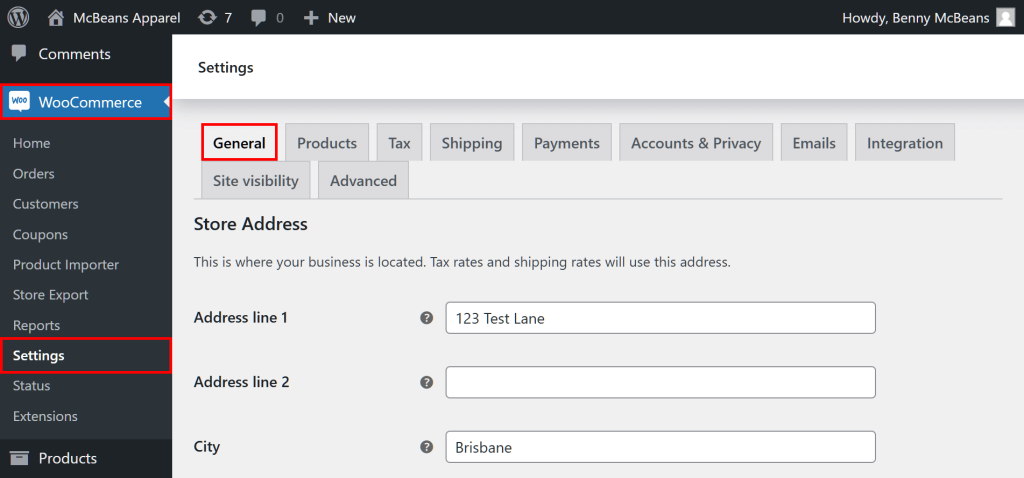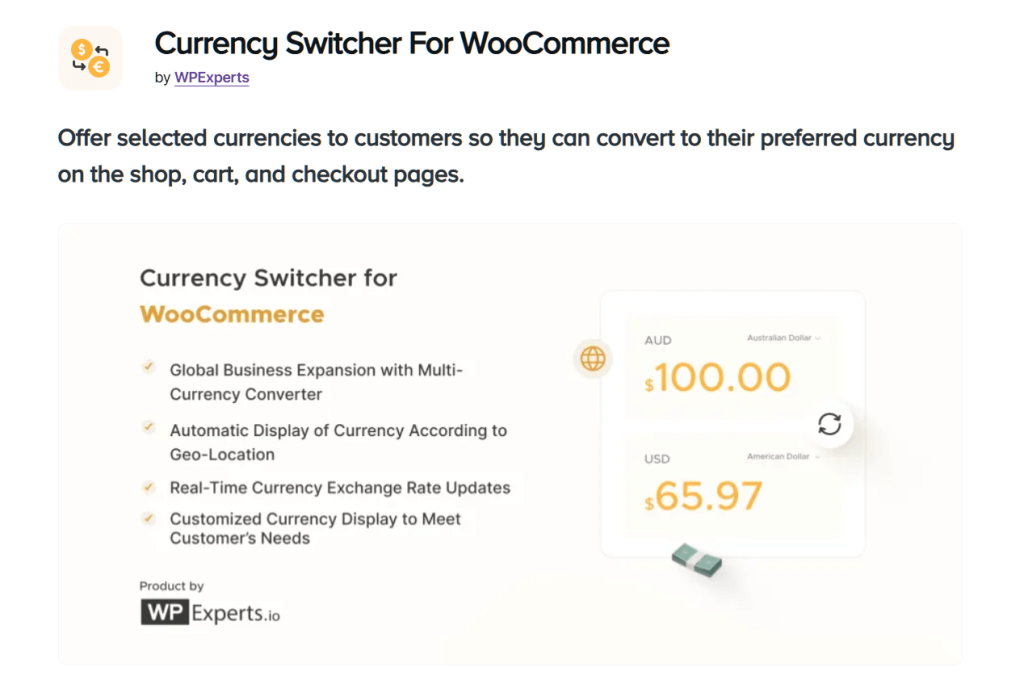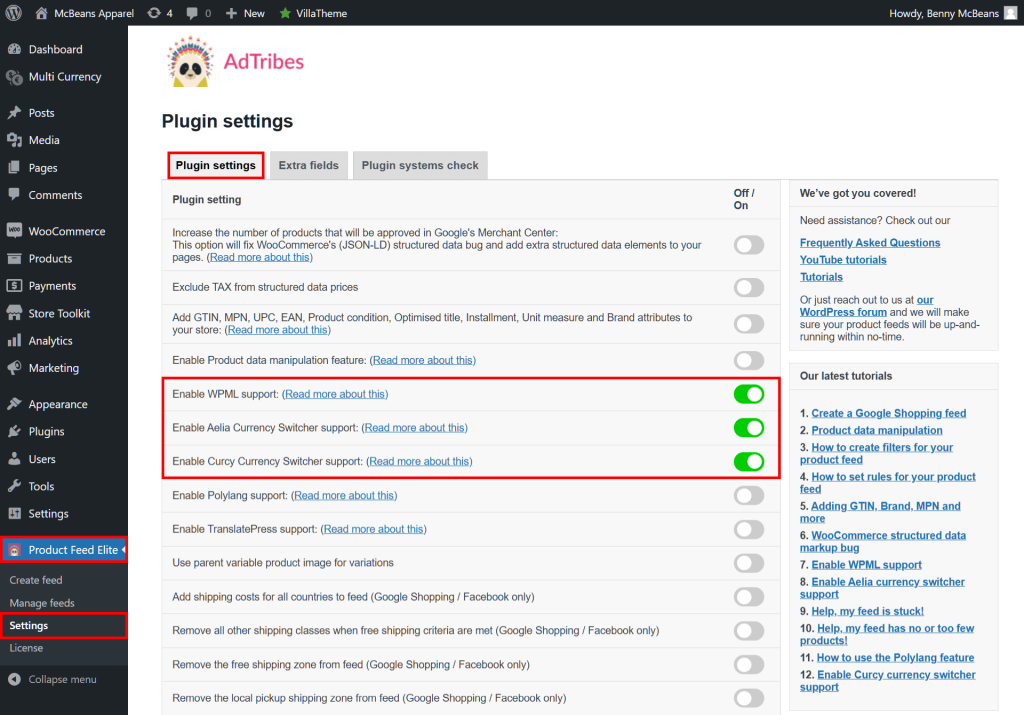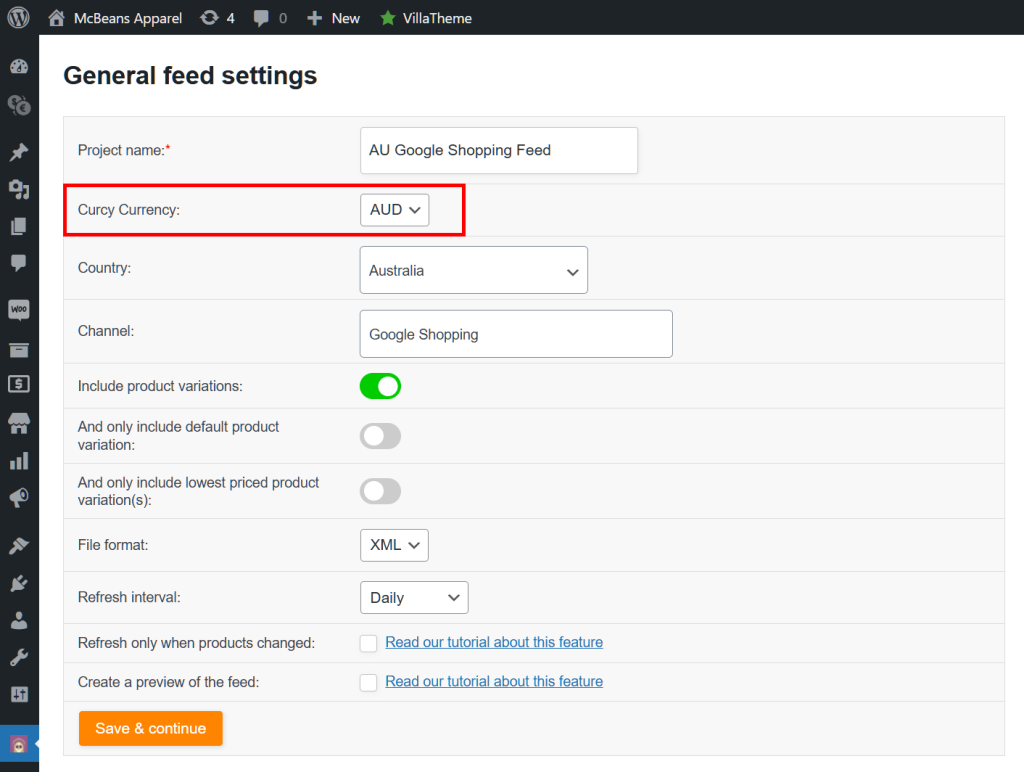
If you want to take your WooCommerce store global, one thing is certain—your customers prefer seeing prices in their local currency. Whether you’re selling to Europe, the U.S., or Asia, offering multiple currencies can make or break international sales. This is where WooCommerce currency change features and tools can help.
When you let customers pay in their familiar currency, you make the buying experience easier and more convenient. This not only reduces friction but also builds trust, encouraging more sales and happier customers.
In this guide, we’ll walk you through how to implement WooCommerce currency changes and boost your store’s reach. We’ll even show you how this ties into product feeds to get your listings featured on massive sales channels such as Google Shopping, Connexity, and PriceGrabber.
So let’s get cracking!
Table Of Contents
- I. Why Offer Multiple Currencies On Your E-Commerce Platform?
- II. How Do You Set Your Platform's Base Currency?
- III. How Do You Enable Currency Conversion On Your Online Store?
- IV. WooCommerce Currency Change Tips
- V. Using Product Feeds To Boost International Sales
- VI. Using AdTribes Product Feed Elite To Change WooCommerce Currency
- Frequently Asked Questions: WooCommerce Currency Change
- 1. Where do I find the currency options in WooCommerce?
- 2. How do I change the currency in the WooCommerce settings?
- 3. How do I change the dollar currency in WordPress?
- 4. How do I add a currency switcher in WooCommerce?
- 5. What is the best WooCommerce currency change solution?
- 6. Do I need a currency converter on my website's checkout?
- Conclusion
I. Why Offer Multiple Currencies On Your E-Commerce Platform?
Imagine you’re shopping online and see a price in a currency you don’t use. Your first reaction might be confusion—or worse—immediate exit. Now imagine that happening to your international customers. It would be a disaster!
For this reason, localized pricing is crucial to creating a smooth shopping experience.
However, offering prices in the currency your customers are familiar with does more than just make shopping easier. It’s a game-changer for your online store in several key ways:
1. Builds trust
When customers see prices in their own currency, they feel more comfortable and confident about their purchase. It shows that your store understands their needs and is set up to cater to international shoppers.
2. Reduces cart abandonment
Unexpected costs or confusion about currency conversion can drive customers away. Thankfully, displaying prices in their local currency minimizes surprises at checkout, which helps keep more customers moving through the buying process.
3. Enhances convenience
Shopping becomes smoother and more straightforward when customers don’t have to worry about converting prices or dealing with unfamiliar currency formats. This ease of use can make your store a preferred choice over competitors.
4. Boosts sales
By removing barriers and making the shopping experience more user-friendly, you’re likely to see an increase in completed sales. Customers are more likely to buy when they feel comfortable and understand exactly what they’re paying.
5. Strengthens global appeal
Showing prices in local currencies demonstrates that your store is serious about international business. It helps you stand out in a global market, attracting shoppers from different regions who might otherwise hesitate.
6. Improves customer satisfaction
A seamless, transparent shopping experience leaves customers feeling valued and understood. Satisfied customers are more likely to come back and recommend your store to others, strengthening your reputation and building customer loyalty.

In short, offering multiple currencies isn’t just a “nice-to-have” anymore; it’s a must-have for any store that wants to expand globally.
II. How Do You Set Your Platform’s Base Currency?
WooCommerce makes it easy to set your online store’s base currency.
Start by going to your WooCommerce Admin Dashboard. Then, click Settings > General to head to the General section.
Now, scroll down and look for the Currency Options section. Here, you can configure the following options:
- Currency: The base currency that will be shown for product prices in your online store
- Currency Position: The currency symbol, which can be positioned before or after the price
- Thousand Separator: The symbol to be used for separating thousands
- Decimal Separator: The symbol to be used for separating decimals
- Number of Decimals: The number of decimal places to be displayed after the decimal point
Once you’re done with your settings, don’t forget to click the Save changes button! This will automatically update all the prices in your store to reflect your changes. Just keep in mind that your settings affect all aspects of your store—orders, reports, and even customer invoices.
For more information, check out this WooCommerce document.
III. How Do You Enable Currency Conversion On Your Online Store?
WooCommerce supports only one base currency for every online store. Thus, if you want to offer real-time currency conversion, you must install an extension. Thankfully, many powerful plugins will enable you to show product prices in various currencies and let customers pay in a currency other than your store’s base currency.
So, do you want to grant every customer the power to change WooCommerce currency? Here are some great options:
- Currency Switcher for WooCommerce: This popular tool lets you add an easy-to-use currency conversion widget to your online store, allowing shoppers to switch between different currencies effortlessly.
- Aelia Currency Switcher: This advanced WooCommerce currency switcher offers powerful and comprehensive multi-currency support for e-commerce platforms. It allows customers to view prices and make payments in various currencies and includes features like automatic currency updates and compatibility with different payment gateways.
- WooPayments Multi-Currency Feature: When you set up WooPayments, you unlock free multi-currency functionality. This means customers can see product prices in their chosen currency and pay in over 100 different currencies.
- Curcy – WooCommerce Multi Currency – Currency Switcher: This WooCommerce currency switcher makes it easy to set up multiple currencies on your online store, letting customers view and pay in their preferred currency with up-to-date exchange rates.
- MultilingualPress: This tool makes it simple to display your content, products, and prices in multiple languages and currencies, so your store can reach and appeal to a global audience.
- Multi-Currency for WooCommerce: This WooCommerce multi-currency plugin lets your customers pay in their preferred currency, making their shopping experience smoother and more convenient.
- Currency Converter Widget: This currency switcher widget updates how prices are shown on your site but keeps transactions in your store’s base currency. It helps you manage and account for sales easily while letting customers see prices in their local currency.
Quick Overview: How to add Currency Switcher for WooCommerce to your online store
Currency Switcher for WooCommerce automatically detects your customer’s location and shows prices in their local currency, based on current exchange rates.
Here’s how to set it up:
- Purchase, install, and activate the plugin.
- Go to your WordPress Admin Dashboard, then navigate to WooCommerce > WCCS Settings to configure your currency settings.
- Head to the Currencies section. Then, use the dropdown to choose all the currencies you want to offer in your store. Plus, you can give each currency a label.
- Enable the automatic updates of exchange rates. Alternatively, you can manually set the exchange rate for each currency, with the default currency in your WordPress environment treated as the baseline value of 1.
- Configure the formatting. This involves selecting the alignment of each currency, the number of decimal places to be displayed after the decimal point, and the flag associated with the currency.
- Select the payment gateway to be used for the currency.
With this setup, your store becomes instantly more accessible to a global audience.
For more information on using this plugin, check out this WooCommerce documentation.
IV. WooCommerce Currency Change Tips
For your e-commerce venture to succeed globally, you need to do more than just allow customers to change WooCommerce currency.
To boost international sales, employ the following additional strategies:
1. Handling currency exchange rates
Keeping currency exchange rates accurate is key to maintaining customer trust. Most currency plugins allow you to automate this process, pulling in real-time rates from trusted sources like Open Exchange Rates or XE.com. If you want full control, you can enter rates manually and adjust them as you see fit. Either way, make sure your prices are updated regularly so that international customers aren’t surprised by price discrepancies.
2. Optimizing the user experience
It’s not just about offering different currencies; you also need to make sure your customers know exactly what they’re paying. Displaying the correct currency symbol, using proper formatting (e.g., €100 vs. 100€), and rounding prices for clarity are all key to a smooth experience.
Additionally, you can use geolocation features to automatically display the local currency for each visitor. This minimizes confusion and reduces the chance of cart abandonment because the customer doesn’t have to guess what they’ll be charged.
3. Managing payments in different currencies
When it comes to payments, not all gateways are created equal. You’ll need to make sure your payment gateway supports multiple currencies. Some options, like PayPal and Stripe, handle international transactions well, but double-check that they cover the currencies you plan to offer.
If your gateway doesn’t support a particular currency, WooCommerce will still display prices in that currency, but the customer will be charged in your store’s default currency. This can lead to unexpected exchange fees for the customer, so choose your gateway wisely.
4. Tax and shipping considerations
Taxes and shipping can get complicated when selling internationally, but WooCommerce gives you the tools to manage this efficiently. You’ll need to configure tax rates for each region you sell to, keeping in mind that taxes may vary by currency. Similarly, you’ll want to adjust your shipping rates based on the customer’s location and the currency they’re using.
This is where product feeds can become incredibly helpful. They ensure that your listings display accurate prices, taxes, and shipping rates across different sales channels. But we’ll dive more into product feeds next.
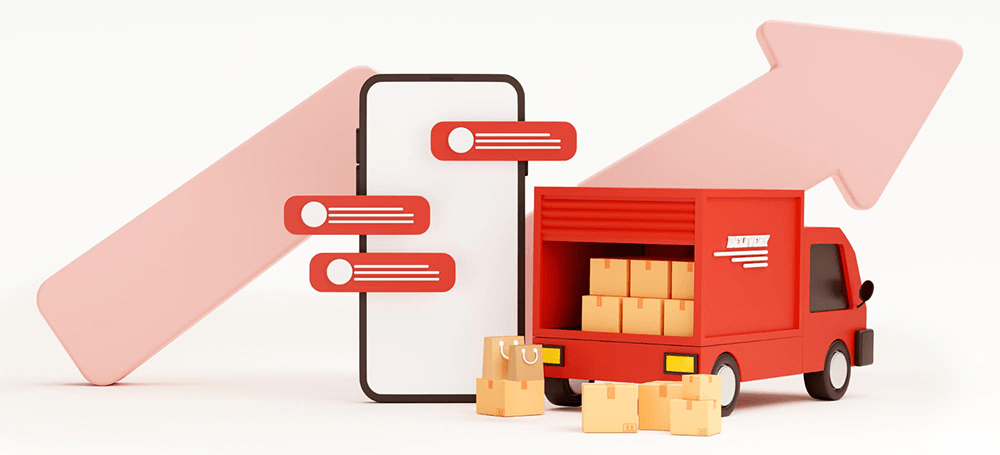
V. Using Product Feeds To Boost International Sales
So, how do product feeds fit into this?
First, let’s answer a few key questions about product feeds.
1. What is a product feed?
A product feed is a data file that holds all the details about your products, including titles, descriptions, prices, availability, and even currency. When you send these feeds to different platforms (such as Google Shopping, Bing, etc.), they use the data to display your products to potential customers. Thus, setting up your product feeds to include local currencies ensures that international shoppers see accurate, up-to-date prices on every platform they visit.
For instance, if you’re selling on Google Shopping, your feed can automatically adjust prices based on the visitor’s location, showing them your product in their local currency. This creates a seamless shopping experience across channels and helps increase your chances of converting those international visitors into buyers.
Hungry for more information about product feeds? Then check out our comprehensive guide, “What Is A Product Feed And How Do You Create One? (Ultimate Guide)“
2. Why create product feeds?
Product feeds are essential for getting your products in front of more potential buyers.
Creating feeds enables you to list your products on various popular sales channels like:
- Google Shopping
- Bing Shopping
- Snapchat
- TikTok
- Connexity
- PriceGrabber
- ShopMania
- Shopzilla
- PriceRunner
- Kelkoo
- Idealo
- … and more!
When you showcase your products on online marketplaces, search engines, social media platforms, comparison shopping websites, and retailer websites, you increase your store’s visibility and attract shoppers who might not have found your website directly.
Product feeds also keep your listings updated with real-time information, ensuring your inventory, prices, and product details are always accurate, which builds trust and improves the shopping experience.
Ultimately, product feeds help drive more traffic and boost sales across multiple platforms.
3. How do you create product feeds?
To create WooCommerce product feeds, you need a product data feed software.
As one of the leading WooCommerce plugins for creating product feeds, AdTribes Product Feed lets you create effective product feeds, allowing you to showcase products through various sales channels.
AdTribes offers a free and premium version, both of which come with many powerful tools. However, the latter boasts additional features—including complete integration with several WooCommerce currency switchers. Which brings us to…
VI. Using AdTribes Product Feed Elite To Change WooCommerce Currency
Once you’ve purchased, downloaded, installed, and activated AdTribes Product Feed Elite, you can take advantage of its complete integration with the following WooCommerce currency switchers:
- Curcy Currency Switcher
- Aelia Currency Switcher
- WCML, WooCommerce Multilingual
But first, you have to enable these options. So head to your WordPress Admin Dashboard, and click Product Feed Elite > Settings > Plugin settings. Then, enable one of the WooCommerce currency switchers as shown below:
For our example, we’ll enable Curcy Currency Switcher.
Next, go back to your WordPress Admin Dashboard, and head to Product Feed Elite > Create Feed. This takes you to the General feed settings page, where you can start the feed creation process.
As you can see below, you now have access to Curcy Currency Switcher, allowing you to click the dropdown and choose a currency from a huge list.
Make sure the currency you select matches your preferred target country.
And that’s it! Once you finish creating your product feed, AdTribes will use your selected currency to calculate your product prices. In addition, it will display said currency as the prefix before the price itself.
For more information on AdTribes Product Feed Elite’s integrations with these WooCommerce currency switcher plugins, check out the following articles:
- New Integration! Curcy Currency Switcher Plugin Now Compatible With Product Feed Elite
- New Integration! Aelia Currency Switcher For Multi-Currency Product Feeds
- New Feature! WPML Support For Product Feeds (Languages & Currency Switching)
Frequently Asked Questions: WooCommerce Currency Change
It’s time to answer some commonly asked questions about currency conversions!
1. Where do I find the currency options in WooCommerce?
To find the currency options in WooCommerce settings, navigate to the WooCommerce Admin Dashboard and head to Settings > General. Here, you’ll find the Currency Options section, which contains options allowing you to change WooCommerce currency and more.
2. How do I change the currency in the WooCommerce settings?
To change the currency in the WooCommerce settings, first head to the WooCommerce Admin Dashboard. Then, click Settings > General and look for the Currency Options section. Here, you can change WooCommerce currency, choose the currency symbol position, select the symbols to be used for separating decimals and thousands, and determine the number of decimal places to be displayed after the decimal point.
3. How do I change the dollar currency in WordPress?
To change the dollar currency in WordPress, first navigate to the WooCommerce Admin Dashboard. Then, click Settings > General and look for the Currency Options section. Here, click the Currency option’s dropdown and choose another currency.
4. How do I add a currency switcher in WooCommerce?
To add a currency switcher in WooCommerce, first go to your WooCommerce Admin Dashboard. Then, click Plugins > Add New Plugin. Next, use the search field to look for a plugin that will allow you to change your currency displays. Once you’ve found one, simply click the Install button, followed by the Activate button.
Alternatively, you can purchase and download a currency conversion software, then navigate to your WooCommerce Admin Dashboard and click Plugins > Add New Plugin. Next, click the Upload Plugin button followed by the Choose File button. Then, locate and click your downloaded file, then click the Install Now button. Now, return to your WooCommerce Admin Dashboard and click Plugins > Installed Plugins. Lastly, find your newly installed plugin and click Activate.
5. What is the best WooCommerce currency change solution?
The best software that will allow you to change currency in WooCommerce depends on your unique requirements. However, the best solutions include:
- Currency Switcher for WooCommerce
- Aelia Currency Switcher
- Curcy Currency Switcher
- Multi-Currency for WooCommerce
- WooPayments Multi-Currency Feature
- MultilingualPress
- Currency Converter Widget
6. Do I need a currency converter on my website’s checkout?
It’s not necessary for your website to display different currencies at checkout.
However, if you want to sell to international markets, you should have a currency conversion tool that displays prices in local currencies. This will help customers make informed purchases and improve their shopping experience.
Conclusion
Expanding your e-commerce store globally requires more than just selling great products. It’s about making sure your customers feel at home when they shop—starting with offering prices in their local currency. With the right settings, plugins, and product feeds, you can set your store up for success and boost your international sales.
To summarize, this article discussed the following key concepts:
- The benefits of offering multiple currencies on your e-commerce platform
- How to set up your platform’s base currency
- How to enable currency conversion on your online store
- WooCommerce currency change tips
- How to use product feeds to boost international sales
- How to use AdTribes Product Feed Elite to change WooCommerce currency
Do you have any questions about how to change currency in WooCommerce? Let us know in the comments section below!
